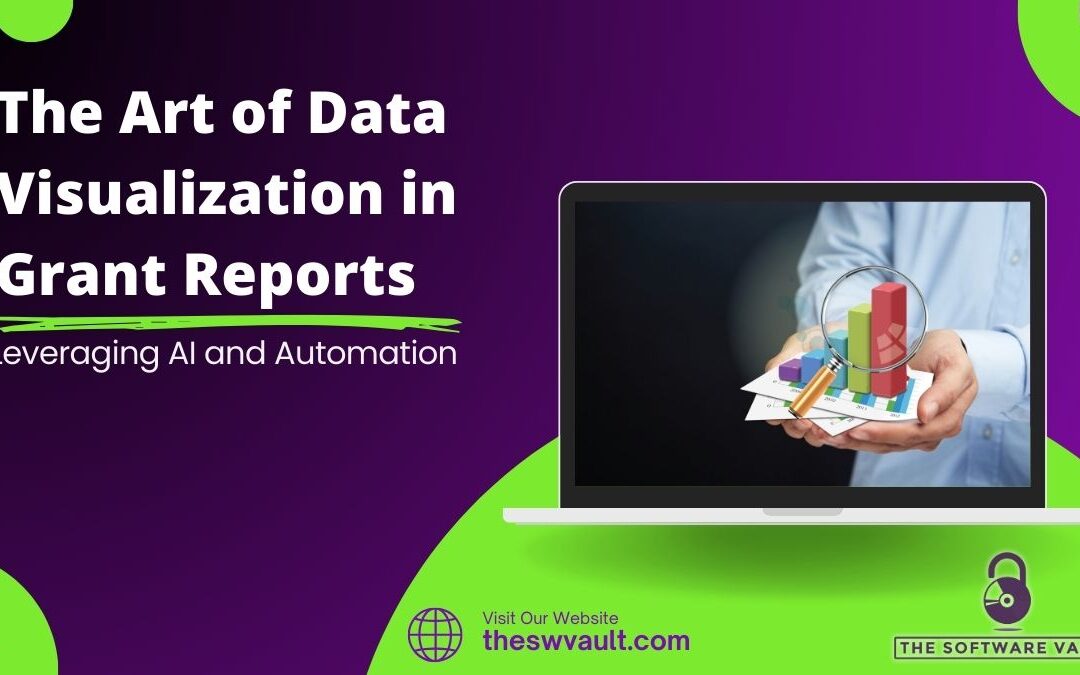Leveraging AI and Automation
In the realm of grant reporting, data visualization plays a pivotal role in conveying complex information, highlighting key insights, and engaging stakeholders. By leveraging artificial intelligence (AI) and automation tools, your nonprofit organization can create and elevate its data visualization practices to create impactful and compelling grant reports.
In this blog, we explore 5 key areas of how the art of data visualization can be enhanced through AI and automation, providing organizations, like yours, with the ability to communicate data-driven stories effectively to your current and future grantors and donors.
1. Enhanced Insights with AI-Driven Visualization
AI-powered data visualization tools can transform raw data, such as impact data, into interactive and visually appealing graphics that offer deeper insights. By utilizing AI algorithms to analyze and interpret data, your organization can create dynamic visuals such as interactive dashboards, predictive analytics charts, and trend analyses that help your grantors and donors understand the impact of their support in a more intuitive and compelling manner.
2. Automation for Efficiency and Accuracy
Automation can be used to streamline the data visualization process, saving time and resources while ensuring accuracy and consistency in reporting. By automating routine tasks like data cleaning, formatting, and chart generation, to name a few, your organization can produce high-quality visualizations more efficiently, allowing them to focus on analyzing insights and crafting narratives that resonate with stakeholders.
3. Customization for Targeted Communication
Leveraging AI and automation simultaneously can also enable your organization to customize data visualizations to meet the specific needs and preferences of your grantors and donors.
By segmenting audiences, analyzing engagement data, and tailoring visuals to align with stakeholder interests, you can create personalized reports that resonate with each recipient, enhancing communication, engagement, and understanding of the impact achieved.
Can you imagine that? Your organization can cater reporting to each of your grantors’ and donors’ interests by leveraging the same data without increasing your resources’ workload for each report!
4. Interactive Visuals for Engaging Experiences
Interactive data visualizations created with AI tools can provide your grantors and donors with engaging and immersive experiences. By incorporating features like drill-down capabilities, real-time updates, and interactive elements, your organization would have the ability to empower stakeholders to explore data, uncover insights, and actively participate in the storytelling process, fostering deeper engagement and connection with the organization’s mission.
5. Storytelling through Visual Narratives
AI-enhanced data visualization allows your organization to craft compelling visual narratives that convey the story behind the data. By combining data insights with storytelling elements – such as annotations, infographics, and multimedia content – your organization can create emotionally resonant reports that captivate audiences, communicate impact effectively, and inspire continued support and partnership from grantors and donors.
In conclusion, the art of data visualization in grant reports is elevated to new heights when combined with AI and automation capabilities. By leveraging these technologies to enhance insights, streamline processes, personalize communication, create interactive experiences, and weave compelling narratives, your organization has the capability to transform your grant reporting into a powerful tool for building relationships, driving impact, and advancing your mission in the digital age.
Resources that Provide Access to Some Automation and AI Tools
Disclaimer: This blog post is intended for informational purposes only and does not constitute professional advice. Organizations should evaluate their specific needs and consult with technology experts before making any decisions.

